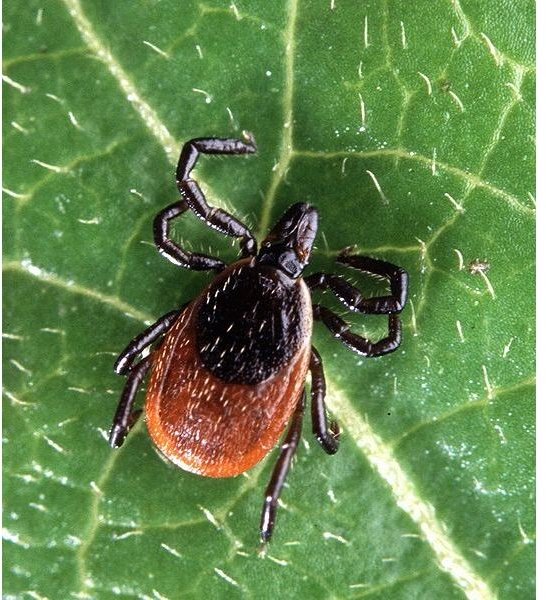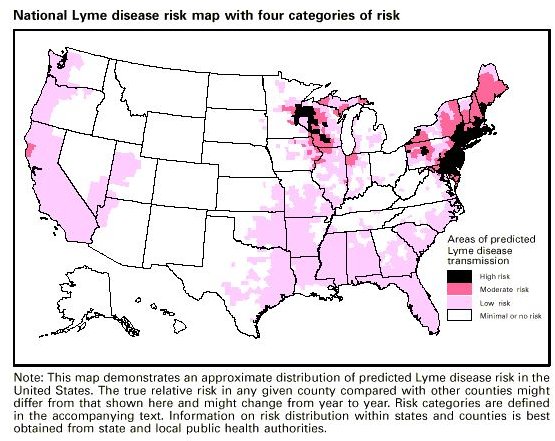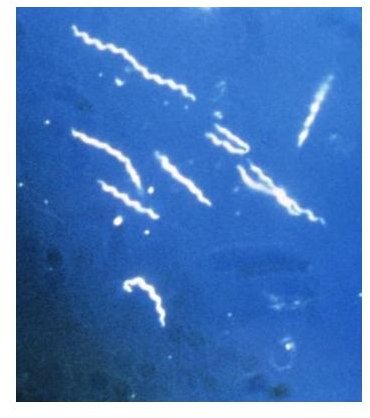Lyme Disease Symptoms, Diagnosis and Treatment
What is Lyme Disease?
Also called Lyme Borreliosis, Lyme disease was first reported near the city of Lyme, Connecticut in 1975 when a number of young people simultaneously became ill, exhibiting similar symptoms. Doctors’ diagnosed the patients with rheumatoid arthritis, which was very unusual because the disease is not common in young people. The appearance of unusual skin rashes on patients several weeks before the occurrence of the initial symptoms suggested a tick-borne disease. The ability of antibiotics to lessen the development of symptoms signified that a pathogenic bacterium is the cause of the disease. Eight years after the disease was reported in Connecticut, a group of scientists successfully isolated a spiral-shaped bacterium, Borrelia burgdorferi, as the causative agent of Lyme disease. The disease occurs during summer and is not communicable between individuals (Madigan 2006; Nester 2007).
Images

Epidemiology

Ten to sixteen thousand cases of Lyme disease are reported annually. The disease has been reported in Europe, Japan, China and Australia, although the causative agent is another species of Borrelia. In the United States, the disease is more prevalent on the Atlantic coast than the Pacific coast (Talaro 2008).
Transmission
Field rats carry spirochetes in their bloodstream. In fact, field rats are the major reservoirs of Borrelia burgdorferi in nature. These spirochetes are transmitted to Ixodes ticks when they bite the rats. The tick has three life stages. It spends its first life stage, as a feeding larva, on mice. Its second life stage, as feeding nymph on a human. Its third life stage, it spends as an adult tick on a deer. The nymph stage emerges only during the summer, the time when people hike or hunt in the forests. The nymph transfers to the human and feeds on human blood. Infection begins when spirochetes in the tick’s saliva enter the wound created by the tick’s bite. Interestingly, only one percent of tick bites result in Lyme disease (Talaro 2008).
The tick that transmits Lyme disease on the Pacific coast of the US is the western black-legged tick Ixodes pacificus. On the Atlantic coast, and the rest of the US, the very small Ixodes scapularis is responsible for the transmission of the spirochete (Nester 2007).
Signs and Symptoms

The initial symptom is usually a big rash which appears at the bite site. The rash may grow to a maximum diameter of 15cm; the patient usually does not notice the rash because it does not hurt or itch. It is also a problem when the rash is hidden (e.g. genital area or the butt), making doctors clueless about the disease. The patients of Lyme disease are sometimes misdiagnosed because the early symptoms are similar to the symptoms of other diseases. This is the reason why the correct treatment is often delayed. Delayed treatment may lead to severe rheumatoid arthritis, a disease where the patient experiences severe joint swelling at the knee. Furthermore, at least 8 percent of untreated cases have shown severe irregular heart rhythm, so that a pacemaker is needed. Facial paralysis, meningitis, encephalitis and other neurological symptoms were also observed in patients (Nester 2007; Madigan 2006).
Diagnosis
The prevalence of Lyme disease within a geographic area somewhat helps doctors to diagnose patients suspected to have the disease; the symptoms exhibited by the patient are also very important in diagnosis. Serological tests are done to detect the presence of the spirochete in the blood and cerebrospinal liquid. There are also tests that detect antibodies against B. burgdorferi (Ingraham 2002).
Treatment
Antibiotics were proven effective in the treatment of Lyme disease. They work by eliminating the bacteria. High doses of antibiotics are usually given to a patient with extreme B. burgdorferi infection (Ingraham 2002).
References
Ingraham, John. 2002. Introduction to Microbiology. Pacific Grove, Calif.: Brooks/Cole Pub.
Madigan, Michael. 2006. Brock Biology of Microorganisms. Upper Saddle River, N.J.: Prentice Hall/Pearson Education.
Nester, Eugene. 2007. Microbiology: a human perspective. New York: McGraw-Hill Higher Education.
Talaro, Kathleen. 2008_. Foundations in microbiology: basic principles_. Boston: McGraw-Hill Higher Education.
